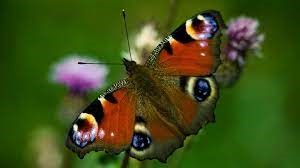
Three Types of Butterflies to Look out for in your Garden this Summer
Summer is on the way at last and the spring has given us a glimpse of the bright and sunny days that we can look forward to spending out in the garden. One of the most pleasing signs that summer has arrived are the sights of butterflies fluttering around the garden.
Sadly, in the last few decades many species of butterflies have dwindled in number and are not such a common sight as they once were. There is a lot that you can do however to attract these beautiful insects to your garden – this includes providing safe spots for them to shelter from the rain, getting some butterfly friendly wild plants from somewhere like this wholesale plants provider Palmstead, and ensuring that you don’t use chemicals or pesticides in your garden.
If you are doing things to attract butterflies, here are just a few of the species that you might be lucky enough to spot in the garden this summer…
Red Admiral – A strikingly beautiful butterfly, that is mainly black but with bold red stripes on the wings and also bright white spots. They are spotted all year round which is unusual for a butterfly. These are fairly hardy butterflies that can thrive in a range of different habitats. This is partly due to the fact that the common nettle is one of the favoured foods for the caterpillars. They have a wingspan of approximately 70mm.
Peacock – This is one of the most easily recognised species of UK butterfly – its brightly coloured red wings and the bright blue and black spots that resemble eyes not only look pretty but are designed to deter predators. Later in the summer is the most likely time to spot one of these in your garden, and their wingspan is around 65mm. Buddleias are a particular attraction to this species.
Common Blue – These pretty little butterflies can be identified by the orange spots on the undersides of the wings. The male butterflies are a more bright and striking blue, whereas the females are brown with a slight blue hue. The months of May to October are when you are most likely to spot them. Their wingspan is around 35mm, and some of the favourite plants for the caterpillars include white clover and lesser trefoil.



